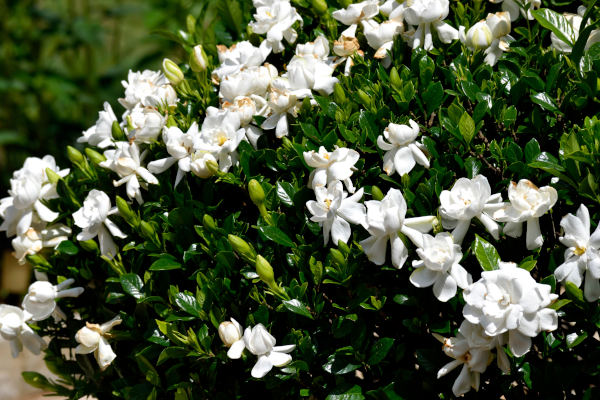How to grow Gardenia
These richly fragrant plants are most often grown indoors as they need warmth, humidity and bright, indirect light to thrive. Prized for their creamy white blooms, which open throughout the summer months, just one gardenia will perfume a large room – if not the whole floor of your home. As a genus plants are native to tropical and subtropical Africa, Asia and the Pacific islands and are part of the coffee family. Gardenia jasminoides, or Cape Jasmine, is the one most commonly available in the UK. Foliage on Gardenia is evergreen, waxy and a rich emerald green – providing foliage interest even when not in bloom.
Plants can be somewhat temperamental but are well worth the effort and perseverance. The right amount of filtered sun is essential so as not the scorch the blooms or cause them to drop. An ambient temperature and an ericaceous soil should be provided along with stable moisture levels for the best results.
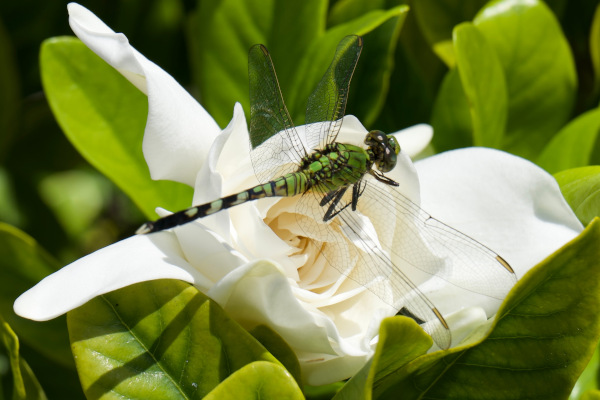
Zantedeschia is a genus of flowering plants from the family Araceae and is native to southern Africa. With a rich history dating back to the Ancient Romans, these deciduous or semi-evergreen perennials have been used as a symbol of celebration. Zantedeschia was Named after Professor Giovanni Zantedeschia, an Italian botanist.
There are two main forms of Zantedeschia: hardy and tender. Hardy forms of the plant can be grown outdoors, enjoy moist soil and full sun or partially shaded conditions - these are known as Arum lilies. Tender forms of Zantedeschia prefer being grown in containers or pots and should be brought inside over the winter - these are known as Calla lilies.
With tuberous flora in all colours from whites, yellows and oranges to deep reds and purples, Zantedeschias are not to be overlooked in any garden, as long as they have sufficient sunlight to grow in.
Ready to learn more about growing Zantedeschia? Read on for all there is to know...

Key Information
Soil pH
Position
Hardiness

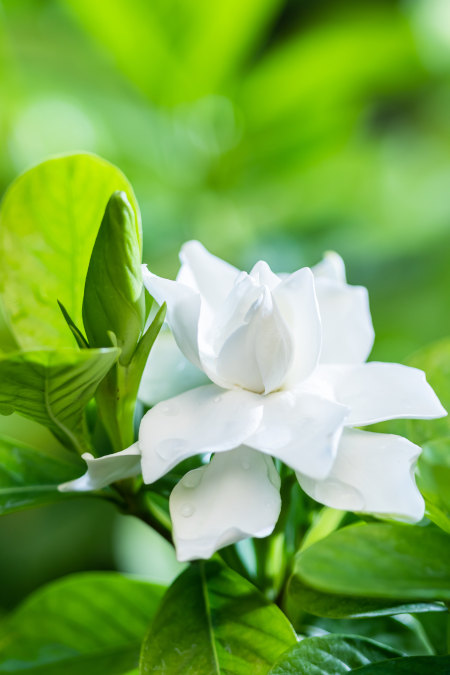
Where & when to plant Gardenia
Position- Filtered sunlight – a west facing windowsill is ideal
Soil- Most prefer moist, well-draining, ericaceous soil
Flowering Period- Summer to early autumn
Hardiness- A tender or half-hardy perennial, dependent upon variety
As a houseplant your gardenia will most likely arrive ready potted. If your plant is pot bound, then it should be potted on immediately in ericaceous compost so that the roots can expand to support the top growth. If your plant has not yet filled its container (and become pot bound) then repot each spring for best results, remembering to gently tease out the roots a little to stop them spiralling around the inside of pot. Feed and water regularly, preferably with rainwater, throughout the growing season. Ensure the soil stays moist, not waterlogged, at all times. Keep humidity levels high by misting your plant occasionally (not when in flower as this damages the flowers), or by standing the container on a tray of wet grit or pebbles.
In winter move your gardenia to a south facing windowsill so that it can get optimum light during the shorter days. Reduce the watering regime as your plant is not actively growing at this time, but don’t let your plant dry out.
Gardenias can be grown outside during summer once temperatures are guaranteed to be over 10°C. Be sure to move them back indoors if this cannot be guaranteed and remember to gradually harden them off first rather than taking them outside and leaving them to fend for themselves. Plants will value the air circulation and rainwater they can enjoy in your garden, and you will appreciate their floral scent – especially near a window or seating area.
How to plant Gardenia
The tender or half-hardy nature of gardenia means that they are best in containers, even if these are placed into the ground over summer then lifted to bring indoors over winter. Check your specific variety’s needs as some are more tolerant of cold than others, such as ‘Kleim’s Hardy’ and ‘Crown Jewel’, we would still recommend keeping them frost free under shelter though.
- For planting in the garden, dig a hole which will accommodate your gardenia’s pot and ‘bury’ it in the soil, raking the area level afterwards.
- Water plants well and allow to drain before planting.
- Soak well with rainwater.
- For planting in containers, first choose an appropriately sized pot. The beauty of gardenia is best appreciated in its own in a pot, preferably one just a few centimetres larger than the root ball for best results. Ensure there are plenty of drainage holes in the bottom.
- If you are using a large or heavy pot, it can be a good idea to fill and plant it in situ to save yourself the trouble of moving once full.
- Use a good quality ericaceous compost, and, if not already present in the compost (check the description on the bag) some suitable slow-release fertiliser granules.
- Start by partially filling the pot with compost; enough so that when placed on it the upper surface of the root ball is about 3cm lower than the top of the pot.
- Infill all the space surrounding the root ball with compost, firming down with your fingers then adding a little more so the plant is held tight.
- Pick up the container and lightly tap on the potting bench or ground a few times to help further settle the compost around the plant.
- Soak well with rainwater.
- A mulch with horticultural grit will look attractive and help to prevent a ‘cap’ or crust forming on the top of the compost (something container plants can suffer due to the artificial nature of their watering).
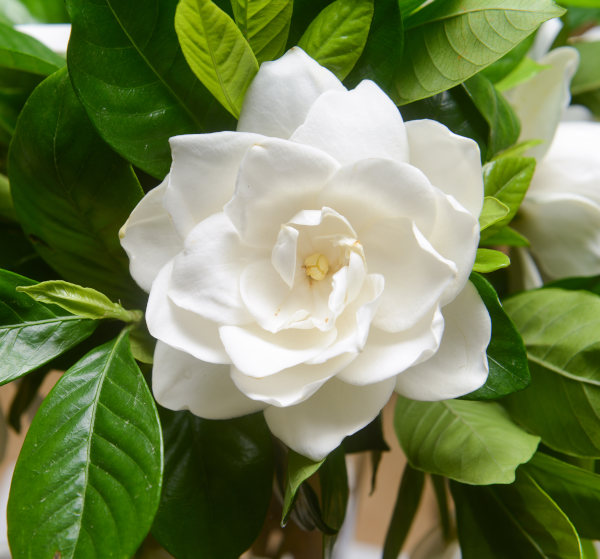
What to plant with Gardenia
These plants are beautiful in their own right and ideal for positioning inside your home on a suitably shaded table or windowsill. Outside they combine will with other exotic looking blooms such as Hibiscus, Abutilon, Agapanthus and Brugmansia for an amazing tropical-themed garden during the summer months.
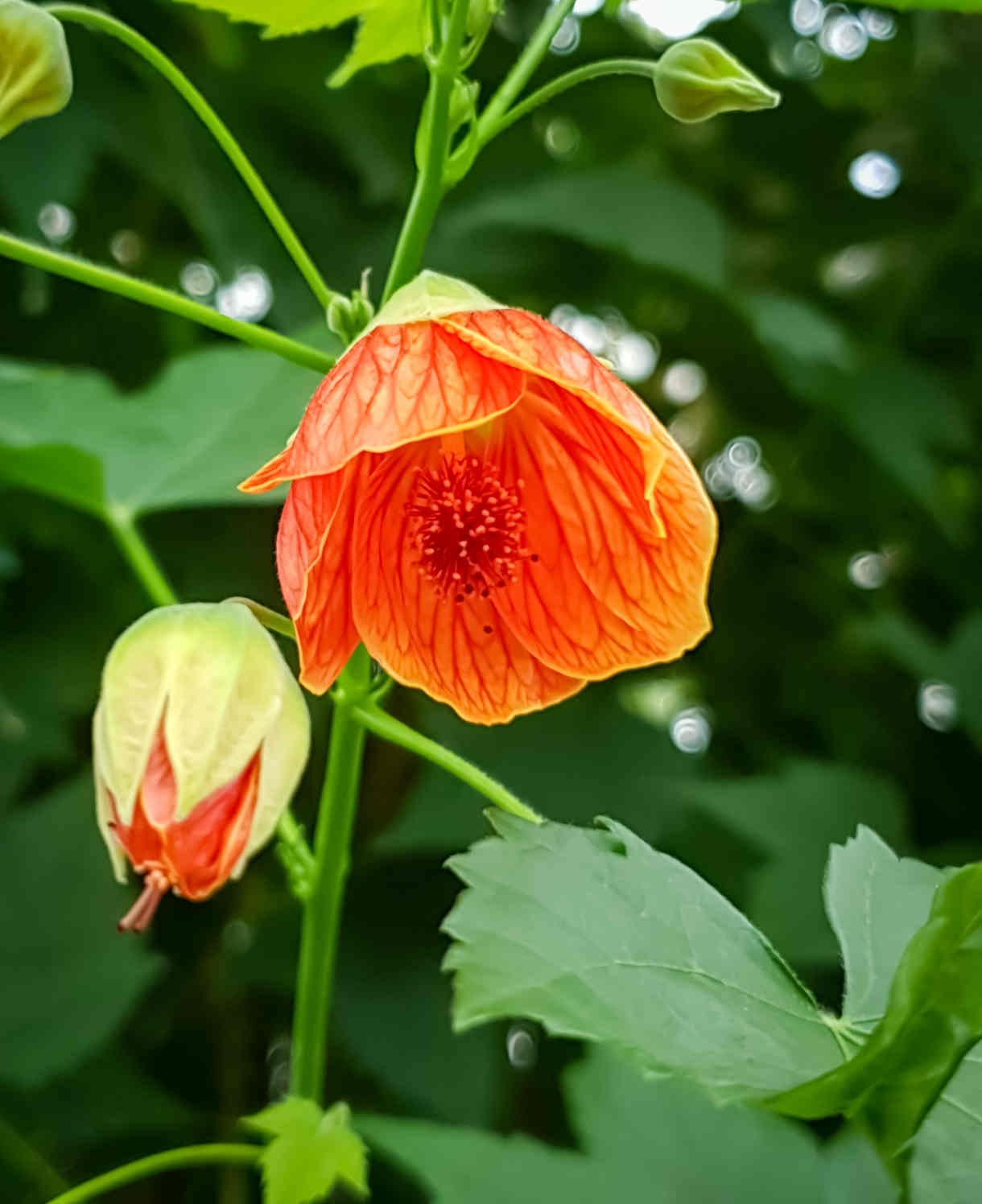
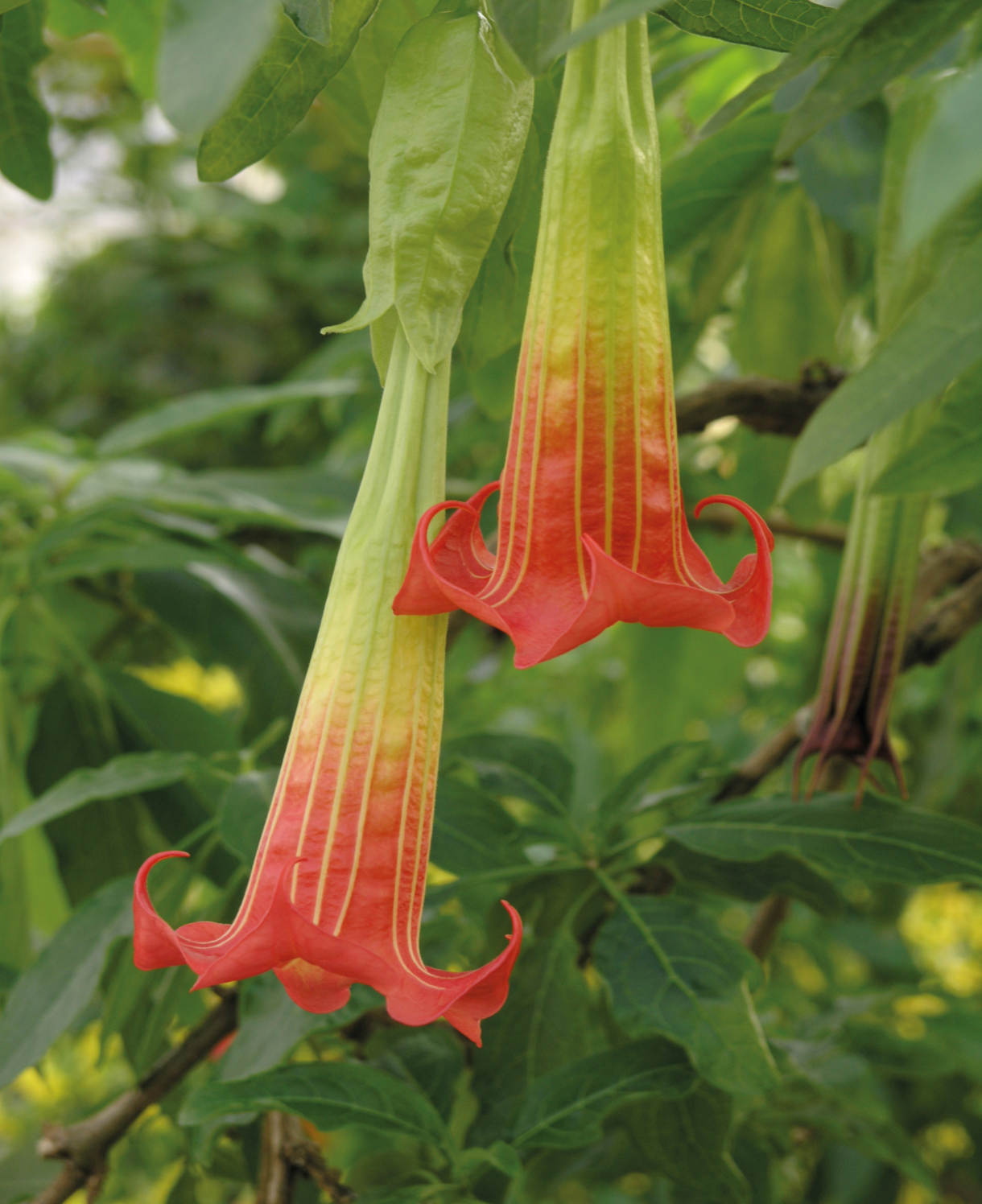
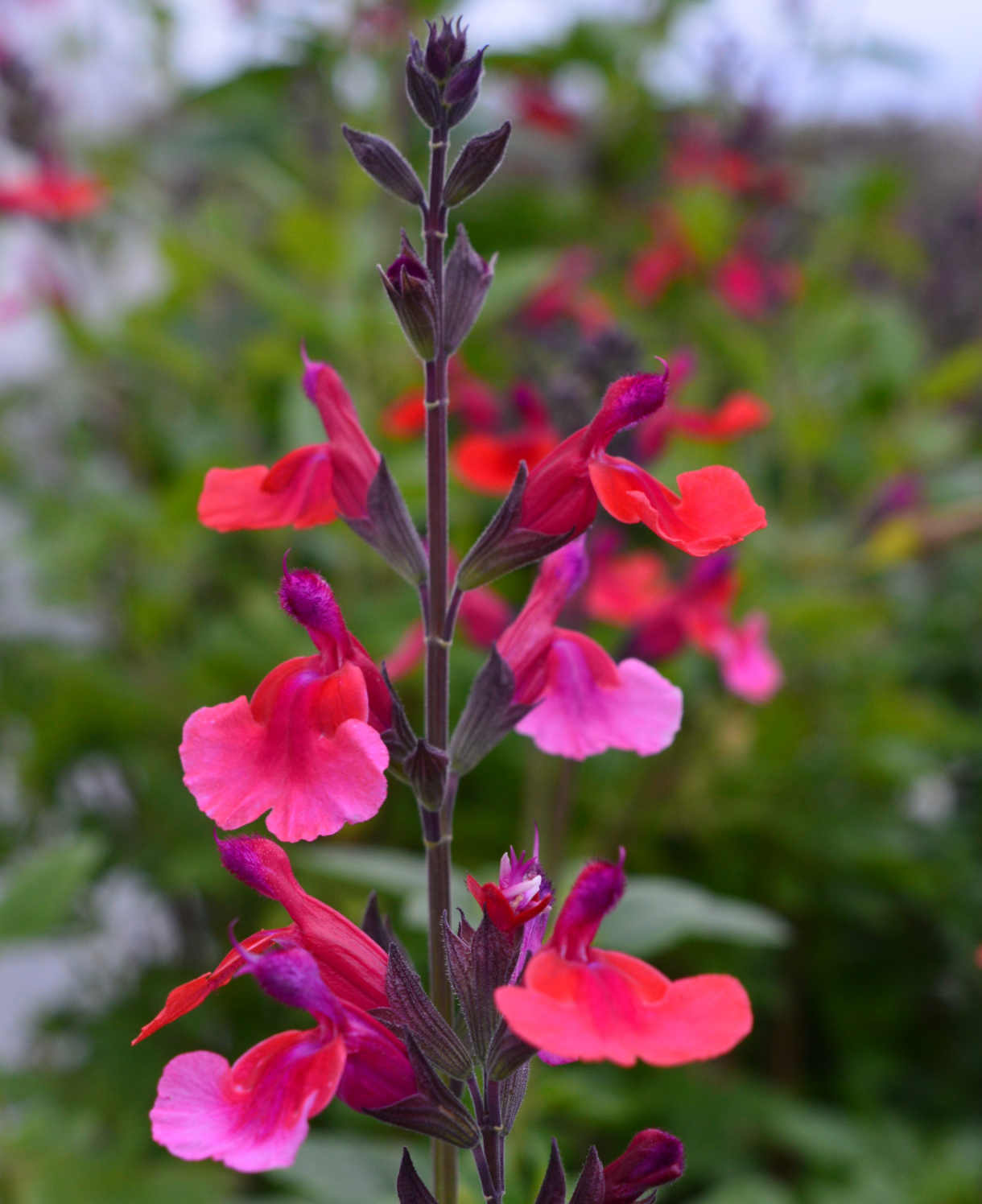
How to care for Gardenia
Pruning and Deadheading
Deadhead as blooms fade to keep your gardenia looking its best.
Watering
Water regularly to ensure the soil remains moist but not flooded with water. Use rainwater wherever possible as ericaceous plants do not respond well to tap water.
Feeding
A proprietary ericaceous feed throughout the growing season will be much appreciated by your gardenia. These are hungry plants that like high nitrogen fertiliser once a week in spring and summer. In winter a basic balanced fertiliser every six weeks will suffice.
Remember to repot each spring so your gardenia has fresh nutrients from the compost. Bear in mind, container-grown plants rely more on the gardener for their nutritional needs.
Cold Protection
Gardenias like temperatures of 21–24°C during the day, and a slightly cooler 15–18°C at night. It is worth noting that large fluctuations can damage the flower buds so having horticultural fleece to hand is wise. Gardenia prefer a consistent winter temperature of 16°C - best assured by keeping in a conservatory or heated greenhouse, but can cope with 10–15°C.
If you put them outside in summer, acclimatise them gradually to outdoor conditions by hardening off. Then be sure to bring them in before night temperatures fall below 10°C, even the cultivars that are said to be more cold tolerant.
Pests and Diseases
Gardenias require specific growing conditions and can develop various symptoms if their needs aren’t being met. These include:
- Yellowing leaves – often on new growth and usually due to overwatering or iron deficiency. Too much water can damage the roots, leading to yellowing foliage
- Browning leaves – too little water can cause leaves to turn brown at the tips and edges
- Yellow shoots (chlorosis)and slow growth - usually caused by poor light and low temperatures. Move the plant to a warmer, brighter spot
- No flowers – this can be due to hot nights, 18°C or above, and dry air. Move the plant to a cooler spot and increase humidity
- Bud drop – usually the result of extreme or fluctuating temperatures, too much or too little water, or irregular watering. Move the plant to a location that can be kept at a constant temperature.
- Wilting leaves, even with moist compost – indicates that moisture is being lost through the leaves more rapidly than it can be taken up by the roots. Move to a shadier position and mist the leaves several times a day with rainwater until the plant has recovered. Stand it in a tray of damp gravel in spring and summer to raise humidity
Also check plants regularly for sap-feeding insects, including red spider mites, mealybugs, scale insects and aphids and treat with a proprietary remedy.
How to propagate Gardenia
Gardenias are surprisingly easy to grow from cuttings. And it’s a good idea to take cuttings annually, as flowering tends to reduce after a few years, so plants need replacing.
You can take:
- Softwood cuttings in late winter or early spring - material is taken from the soft and flexible young shoot tips, which root readily.
- Semi-ripe cuttings in summer – heel cuttings are often especially successful whereby a section or ‘heel’ of stem is retained along with an offshoot to encourage rooting.
Once rooted, move your cuttings into individual pots of ericaceous compost. Re-pot annually as they grow, to ensure the roots don’t become congested.
*Many plants carry Plant Breeders Rights and cannot be propagated for commercial purposes.
Common Gardenia Questions
- Is gardenia easy to grow?
Relatively, although its needs are quite niche. Providing you adhere to these you will be rewarded with lush foliage, creamy white blooms and oodles of perfume!
Will my gardenia last?
With a little extra effort then ‘yes’ although its flowering ability will reduce as plants mature year on year – hence the need to replenish stock every two or three years.
